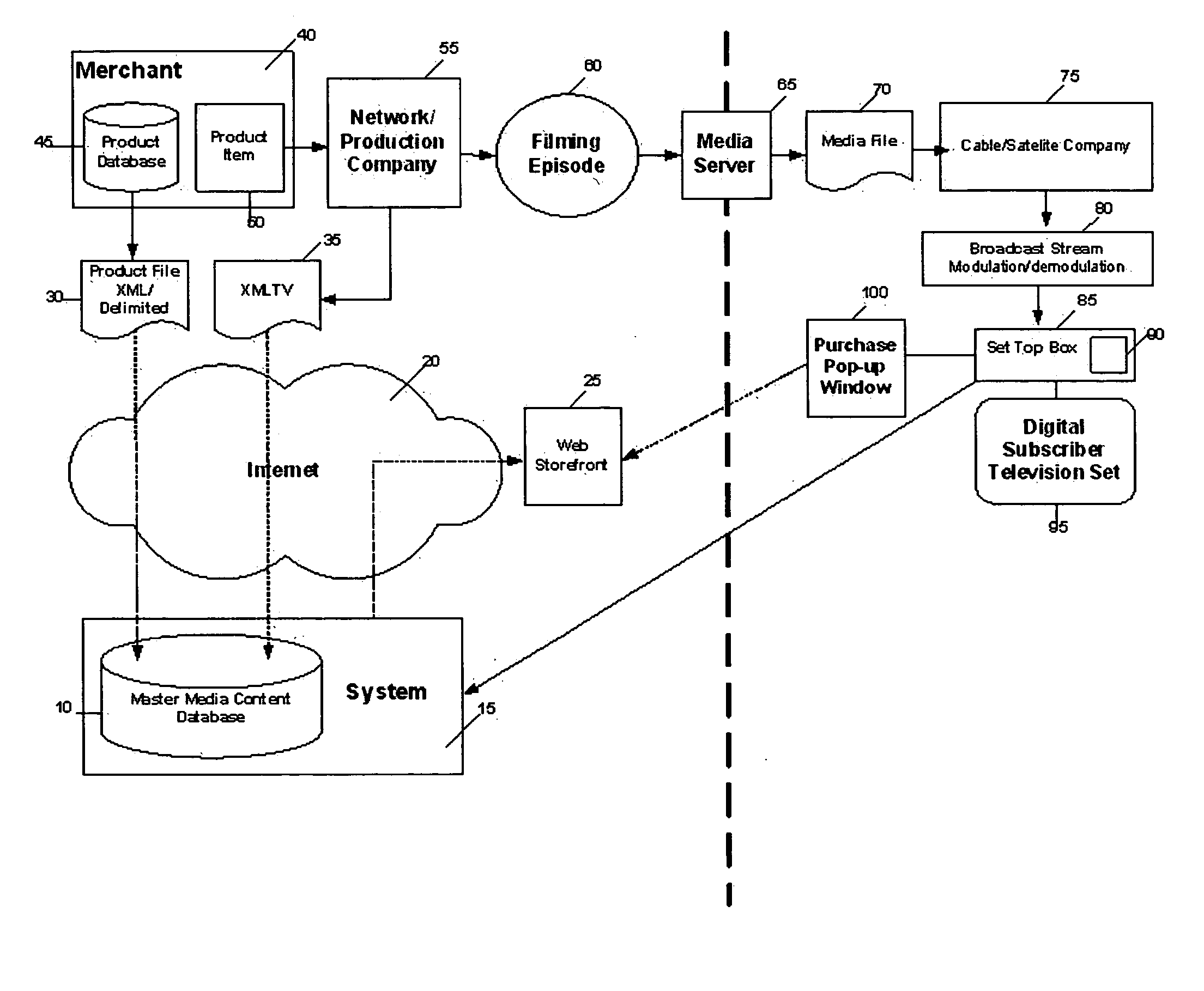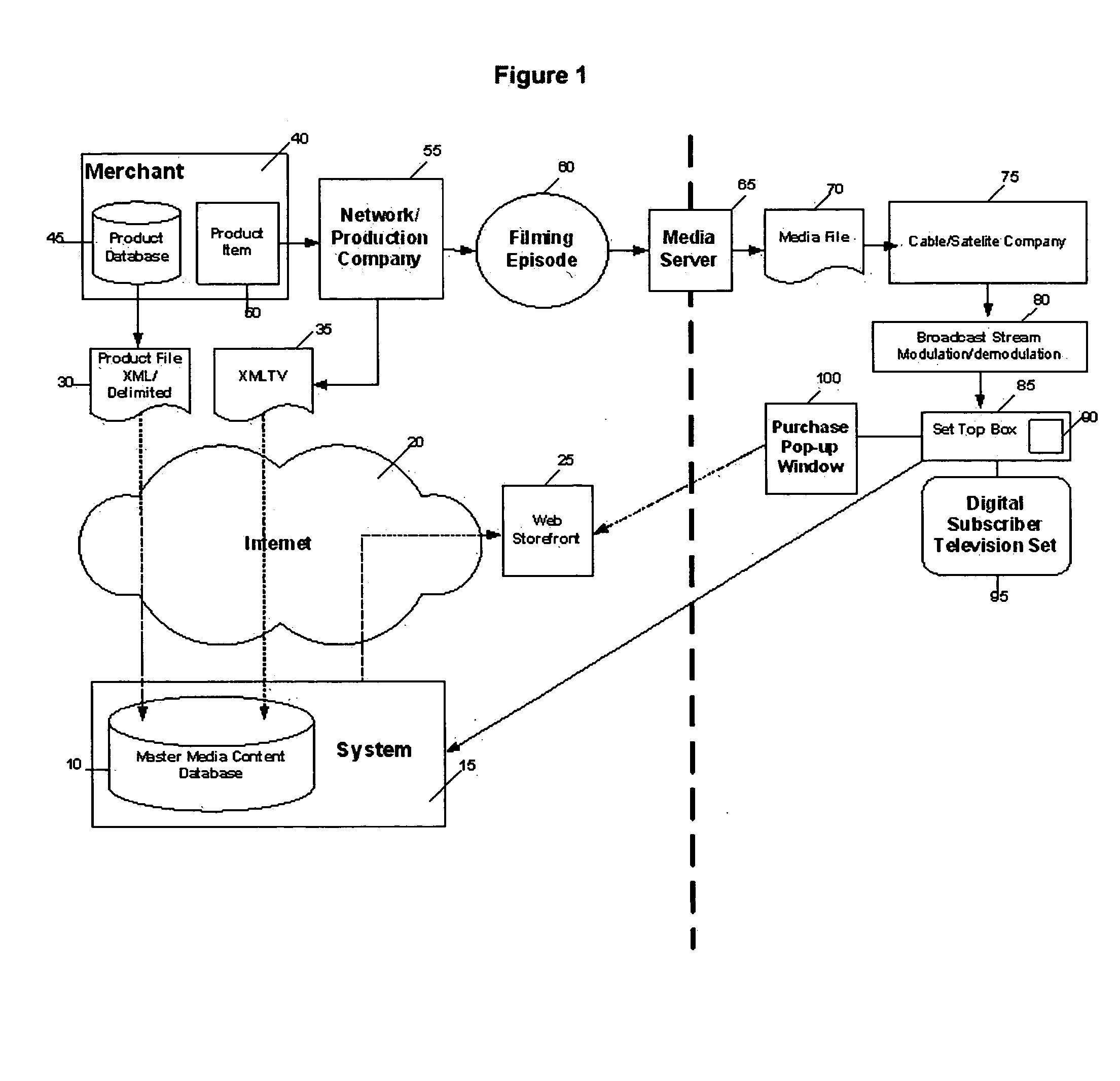Aggregation of retailers for televised media programming product placement
a technology for aggregating retailers and televised media, applied in the field of electronic commerce, can solve the problems of not giving the consumer the flexibility he or she is used, the hsb industry has not given merchants full sales potential, and the ineffective selling channel of merchandise or consumer goods. to achieve the effect of easy location and purchas
- Summary
- Abstract
- Description
- Claims
- Application Information
AI Technical Summary
Benefits of technology
Problems solved by technology
Method used
Image
Examples
first embodiment
[0059] The third general step in the construction of the electronic commerce site is establishing an interface with the customer. In a first embodiment, a customer accesses a central website via the internet, which contains all of searching and linking functions that are required to locate an item for purchase, then direct the customer to the website of the appropriate retailer to complete the transaction. The central website has access to the database produced by the second general step, and may perform searches according to various criteria, described above. The central website may additionally perform some purchasing functions, such as storing of personal information or credit card numbers, for example.
[0060] Retuming to the very specific example of the boots, a customer using the central website may search for the boots using a number of different criteria. The customer may search for all products featured on that episode of that series and may pick the boots off a list of all p...
second embodiment
[0061] In the third general step, the interface with the customer may be through a decoder attached to (or embedded in) the customer's television. Before a show is aired, an encoder system recognizes the presence of one or more selected items or products in the frame during a program, and may preferably track the items' locations on screen as the program is recorded. The encoder system then synchronizes the location information to the database produced by the second general step, and stores the synchronized location information as product tracking information. During broadcast, the product tracking information is received at a home decoder (preferably as digital information) along with the program itself, and the decoder displays some indicia of any of the selected products appearing on screen at the time that they appear on screen. The decoder may preferably be integrated into the customer's television, or may be a separate device. The customer may respond to the indicia on the scr...
PUM
 Login to View More
Login to View More Abstract
Description
Claims
Application Information
 Login to View More
Login to View More - R&D
- Intellectual Property
- Life Sciences
- Materials
- Tech Scout
- Unparalleled Data Quality
- Higher Quality Content
- 60% Fewer Hallucinations
Browse by: Latest US Patents, China's latest patents, Technical Efficacy Thesaurus, Application Domain, Technology Topic, Popular Technical Reports.
© 2025 PatSnap. All rights reserved.Legal|Privacy policy|Modern Slavery Act Transparency Statement|Sitemap|About US| Contact US: help@patsnap.com



